Known as a hotbed of tourism and a place for the people of the Houston area to relax, Galveston County is far more than its reputation. While the boundaries of the county go beyond the titular island, Galveston County still has limited space for all the commercial, residential, and industrial needs of the populace. This puts extra value on every piece of land and has pushed property values into the stratosphere, especially in the last few years. Galveston property taxes even made headlines in 2025, where aggressive taxation by the Galveston County Central Appraisal District (GCAD) caused a wave of devastation for rental properties targeted at tourists, with many being foreclosed on or sold due to rising costs.
While Galveston County suffered record property hikes in 2025, it was not all doom and gloom. Informal property tax appeals were used to great effect in slowing or mitigating the damage. This was mainly because Galveston has some of the highest protest numbers in the state of Texas, with over 35% of properties being appealed in some fashion. Once the first round of appeals was in the books, taxpayers next had to wait for formal hearings with the appraisal review board (ARB) to see what the total reductions would look like. That has finally been concluded, and in this article, we will see how the combined effort of these appeals was able to bring values back down into the realm of reality. We will also note in some key places where clients of O’Connor did well.
Appeals Cut Record Tax Hikes in Half for Homes
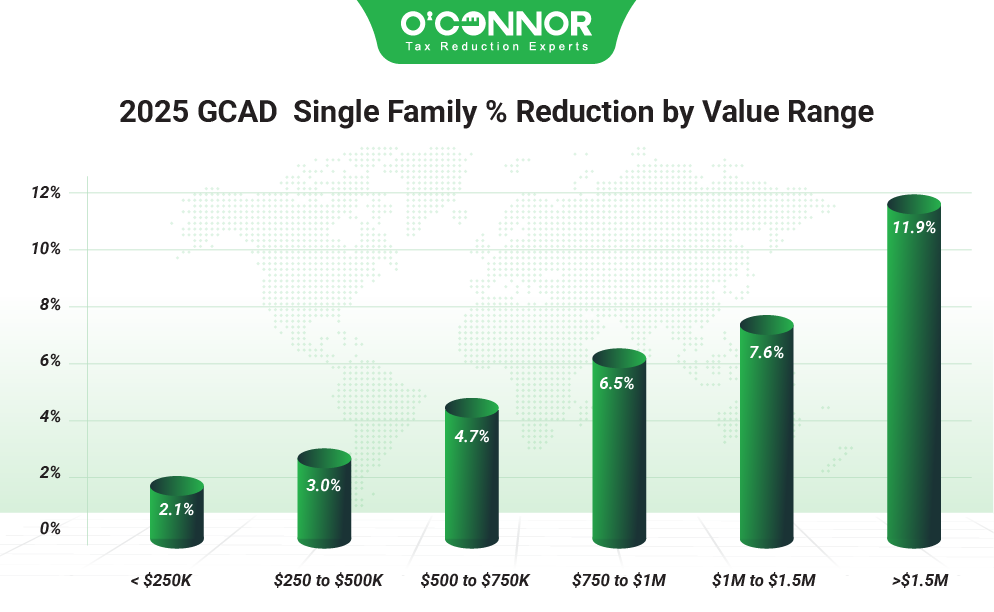
With an initial spike of 7.5%, it was these property values that wiped out many of the AIRBNBs across Galveston County. While seen as a mixed blessing for residents, the hike was still felt across the county. Informal appeals were only able to lower taxable value by 0.9%, but these were boosted greatly by formal hearings, taking the new combined decrease to 4.5%. This drove the taxable total value down from $50.21 billion to $47.97 billion. Homes worth between $250,000 and $500,000 were the largest block when it came to value. and a culling of 3% took their collective value down to $21.73 billion. Homes worth between $500,000 and $750,000 experienced a reduction of 4.7%, falling to $10.55 billion. The largest savings by percentage came from giant luxury homes worth over $1.5 million, which saved 11.5%. Clients that joined O’Connor saw improved savings across the board, and their overall total was slashed by 6.8%.
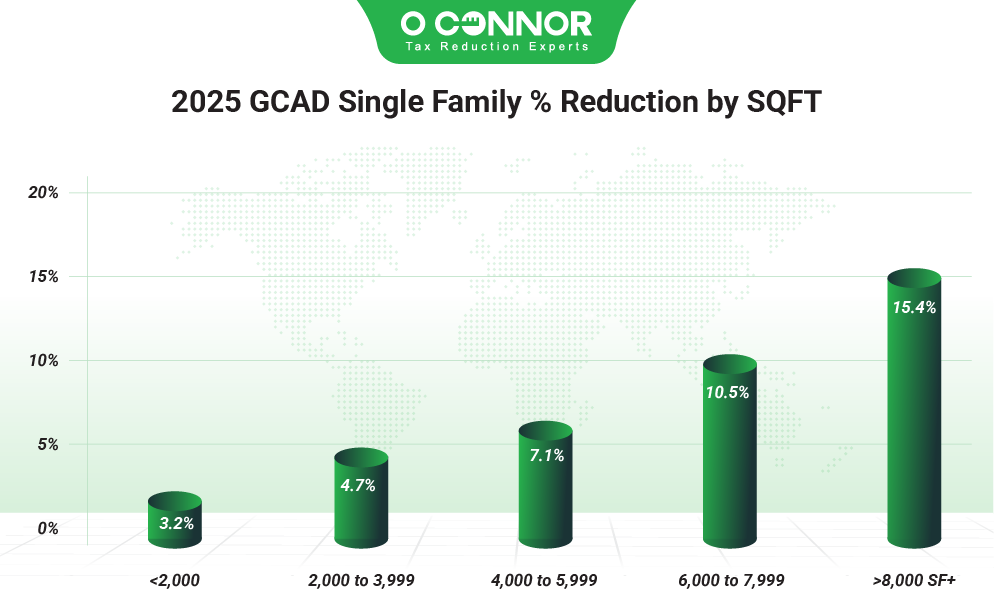
Traditionally, homes in Galveston County are modest, but not tiny. The most valuable collection of residential property was homes measuring between 2,000 and 3,999 square feet, which had a combined total of $23.76 billion after a cut of 4.7%. Residences under 2,000 square feet followed with a value of $19.33 billion after an appellant decrease of 3.2%. As homes got larger, so did their value reductions, including 7.1% for those between 4,000 and 6,999 square feet and 10.5% for those measured from 6,000 to 7,999 square feet. Though they were a fraction of the whole, giant homes saved 15.4%. These had previously seen an enormous spike of 33.7%. As a general rule, each category was able to slice their previous increase in half.
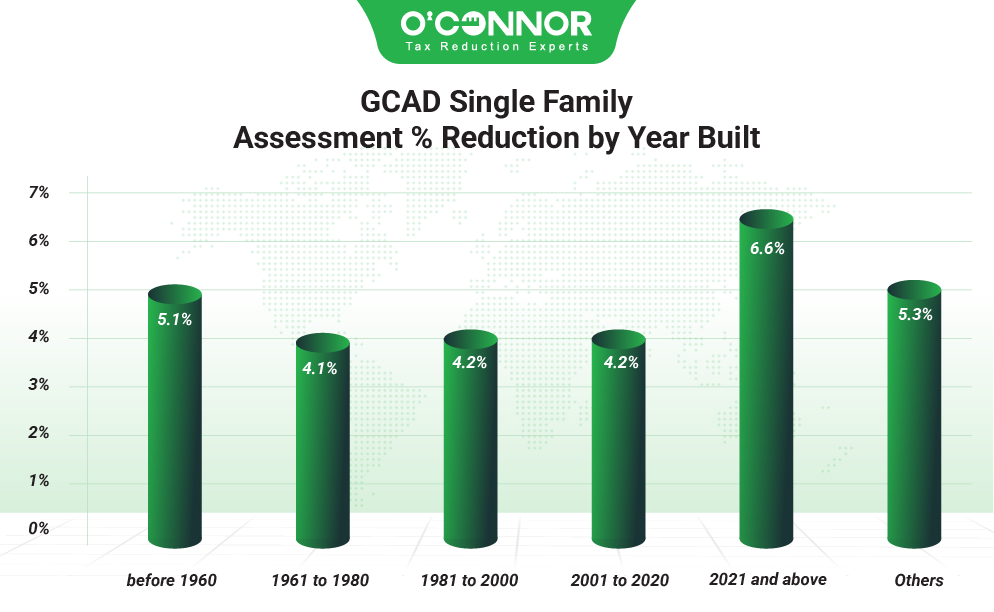
When looked at by age of construction, Galveston County largely apes what is seen across Texas. The building boom of 2001 to 2020 provided 43%, or $20.60 billion in value. This follows a significant reduction of 4.2%, which helped offset a hike of 4.7%. Those built from 1981 to 2000 were in second place with $13.29 billion after a cut of 4.2%, which helped counter a rise of 5.2%. New construction was the real showstopper, which stormed into 2025 with an enormous increase of 42.2%. This was slowed by 6.6% by combined protests, resulting in a final sum of $4.03 billion.
Formal and Informal Protests Completely Wipe Out Record Commercial Gains
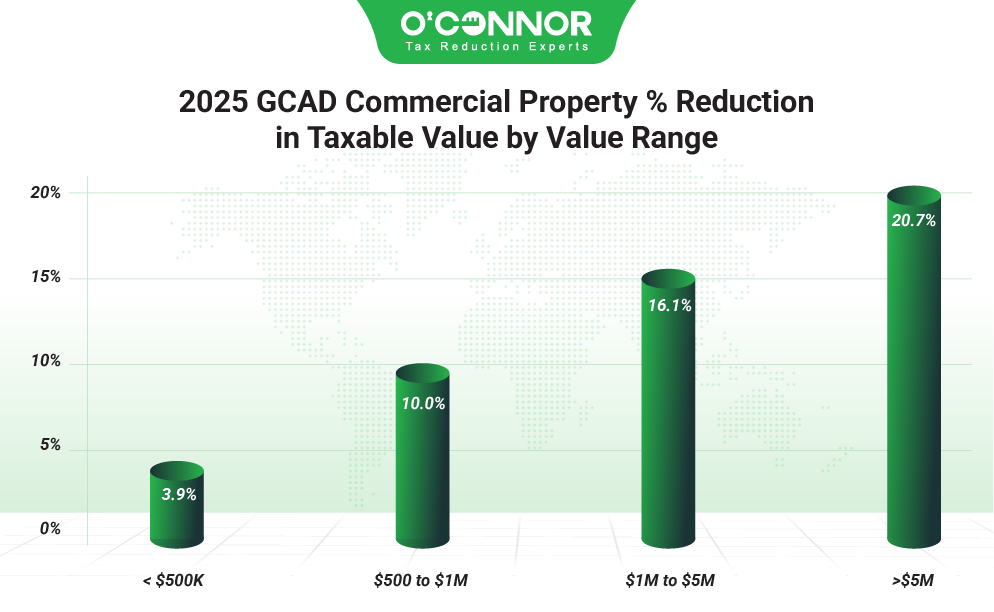
The true headline stealer for the 2025 tax season was the gigantic commercial property tax hike of 18.2%, which slammed businesses of all types. Double the troubling residential spike, things were looking bleak. Initial appeals brought in some hope, as they were able to bring a reduction of 6.3%. However, it was ARB hearings that truly decided matters, and they combined with informal appeals to smash values with a total cut of 18.5%. This took the grand total for commercial properties to $10.93 billion, which not only erased the spike but took the total value down by millions of dollars. The biggest beneficiary of this was commercial properties worth over $5 million, which saw a reduction of 20.7%, falling to $7.80 billion. O’Connor customers did even better, with an overall culling of 28.5%, including a massive trimming of 33.7% for businesses worth over $5 million.
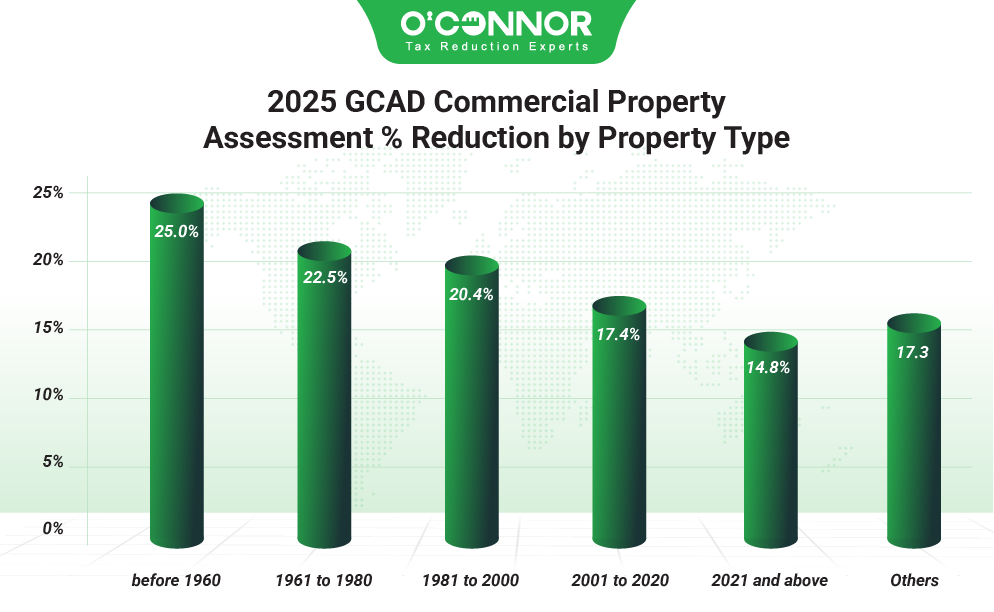
Due to its limited nature, raw, undeveloped land was the most valuable of commercial properties, weighing in at $4.64 billion after a reduction of 16.8%. For actual buildings, apartments were No. 1 with $3.05 billion. This was achieved after an increase of 31.5% and a decrease of 20.8%. Retail had seen the largest increase with 40.1%, but this was trimmed by 23.9%, reaching $1.28 billion. Offices were slashed by 13.5%, countering an increase of 20%. Hotels, one of the lifeblood properties of Galveston, saw a strong decrease of 16.9%, which battled an increase of 20.7%. Since these decreases came after the increases, the money saved by them usually overpowered the spikes.
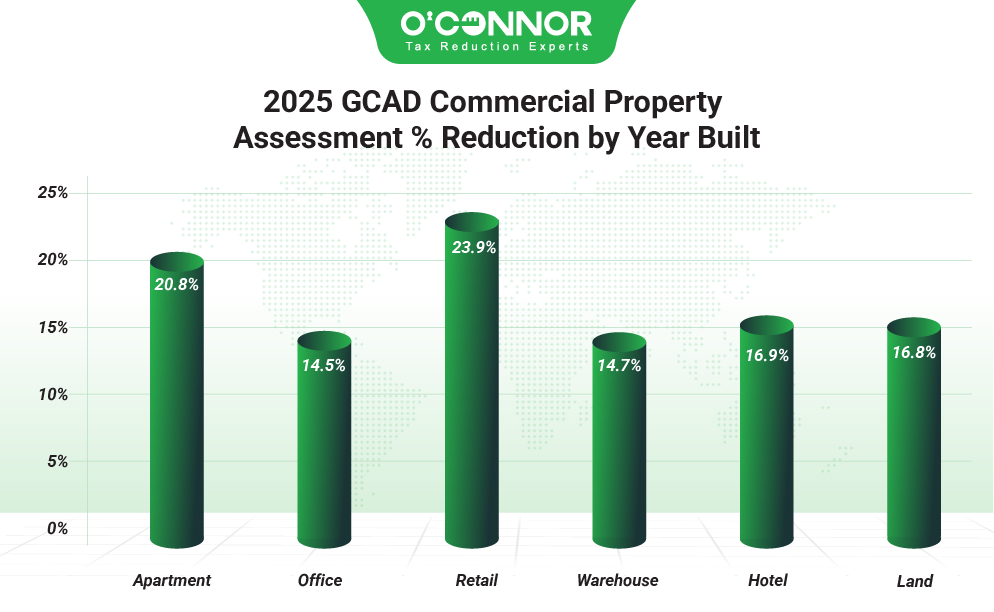
Age of construction for commercial properties was not as outrageously tilted as those for homes. While the period from 2001 to 2020 was still in the lead, it was only responsible for $2.42 billion, or 22.1% of the whole. $1.35 billion of the total came from buildings constructed from1981 to 200, while $1.57 billion came from buildings from 1961 to 1980. These saw cuts of 20.4% and 22.5% respectively. New construction, as it is apt to do, added 44.9% in 2025, but this was tamed somewhat by 14.8% in combined appeal reductions. New construction’s final tally was $852.06 million.
Galveston County Apartments Save 20.8%
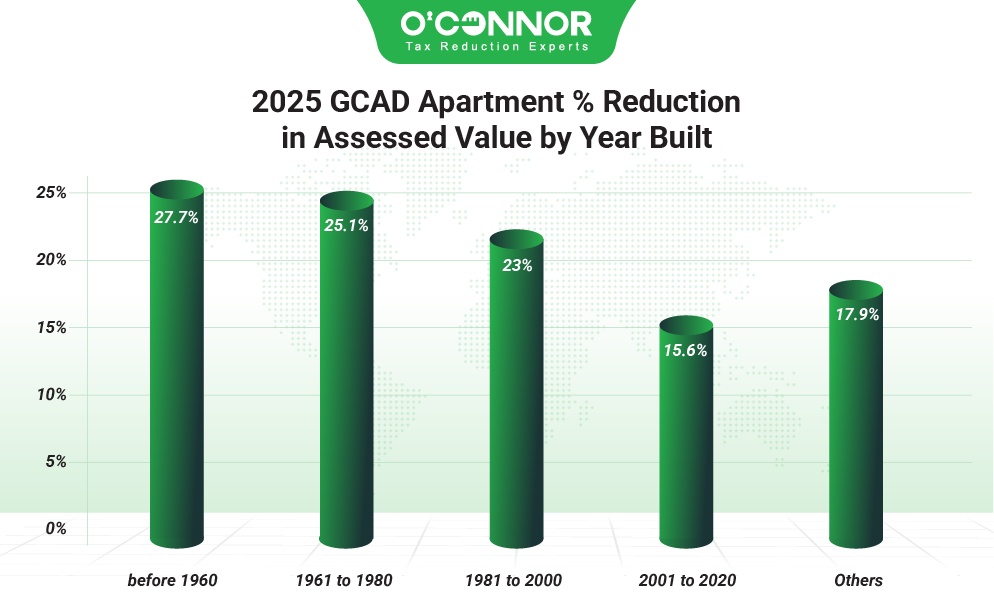
Like most Texas counties, apartments were the most valuable piece of commercial property, not counting empty land. As established earlier, the largest share of the value came from buildings constructed between 2001 and 2020, which held 31% of it, or $946.54 million. This was reduced by 15.6%, countering an increase of 25.1%. Those built from 1961 to 1980 were in second place with $902.91 million, which was after a cut of 25.1%. Apartments built between 1981 and 2020 reached $568.25 million after a drop of 23%. New construction once again stole the show, nearly supplanting the previous category, and would have happened if appeals had not lowered its total by 15.6%, resulting in a sum of $539.97 million. New construction saw a huge leap of 59.8%. Apartment owners that joined O’Connor received quite the boon and saw an overall reduction of 34.8%.
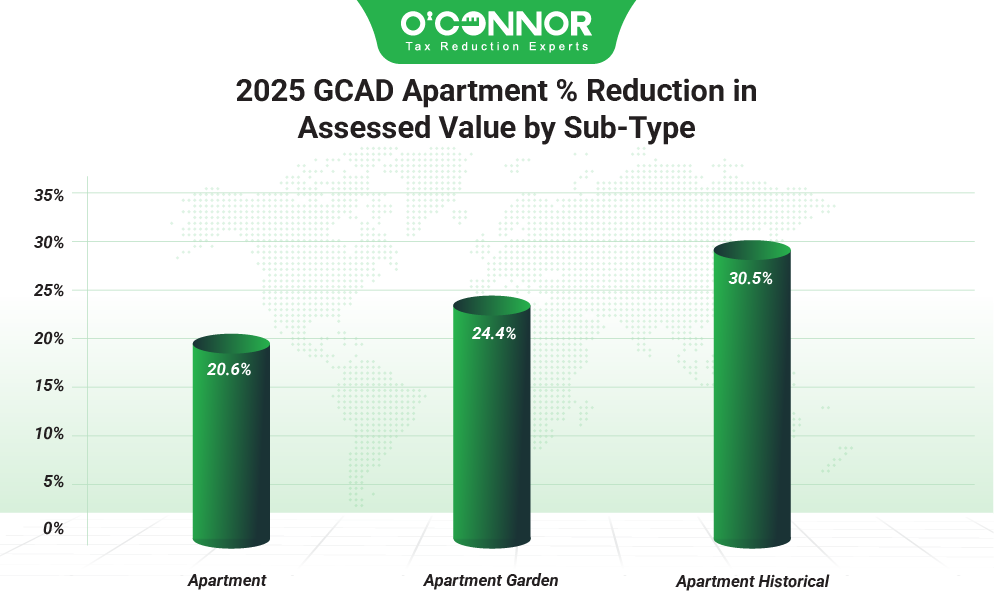
GCAD broke apartments down into three subtypes. Generic apartments were the leader in value by far, accounting for $2.98 billion after a large reduction of 20.6%. This was followed by historic apartments with $48.19 million and garden apartments with $26.98 million. These were reduced by 30.5% and 24.4% respectively.
Office Values Nearly Reduced to Nearly 2024 Levels
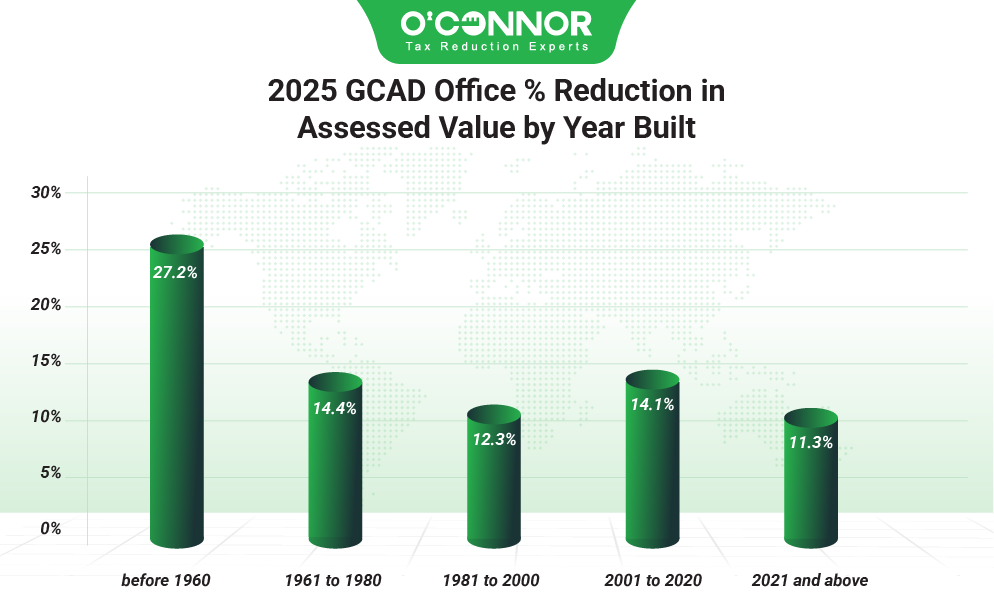
In 2025, office values unexpectedly soared by 20.2%, reaching $1.39 billion. After both appeal classes hit, this was reduced 14.5% to $1.19 billion, which was virtually the 2024 total. This was a stark reversal of fortune. Out of all timeframes, those constructed between 2001 and 2020 saw the most reduced, with 14.1% coming off the book, translating into a final sum of $468.62 million. After respective reductions of 14.4% and 12.3%, properties from 1961 to 1980 and those from 1981 to 2000 each totaled around $285 million. New construction got a big cut of 11.3%, which helped negate a jump of 27.7%. We at O’Connor helped our office clients save 23.4%.
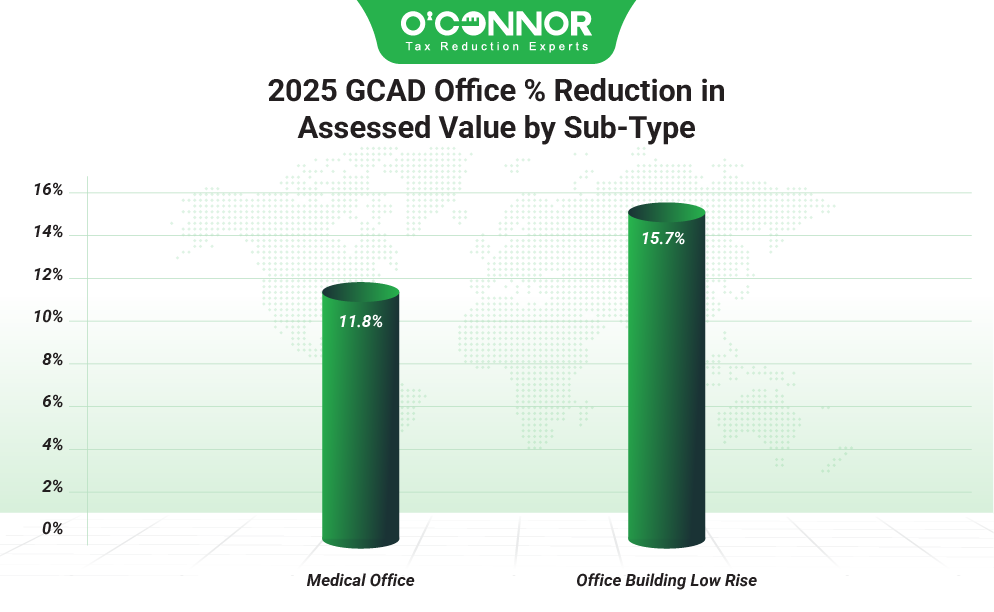
There were only two office types according to GCAD. Low-rise office buildings were reduced by 15.7% to $824.78 million. Medical offices managed a savings of 11.8%, resulting in a final sum of $363.21 million.
$401 Million in Taxable Retail Property Value Saved in Galveston County
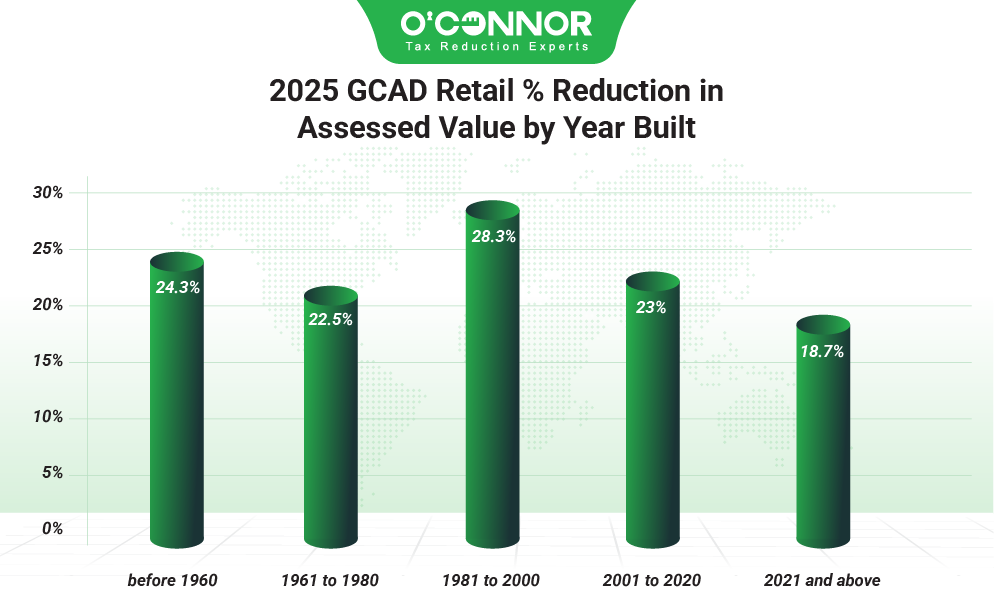
The enormous spike of 40.1% in retail value was the most surprising of the tax year. This huge jump drove the overall value to $1.60 billion. Informal appeals were only able to cut this by 4.8%, but when ARB hearings joined the right, the combined reduction was upgraded to 23.9%, bringing the total to $1.28 billion. Nearly half of all value came from retail stores built from 2001 to 2020, an unusual stat as retail usually leans older. This was reduced by 23% to $621.59 million. After a drop of 22.5%, those built from 1961 to 1980 added up to $275.12 million, while a cut of 28.3% brought buildings constructed from 1981 to 2000 to $238.38 million. New construction was not much of a factor, achieving a total of $49.82 million after a cut of 18.7%. O’Connor managed to beat all of these numbers and got our clients a total reduction of 26.8%.
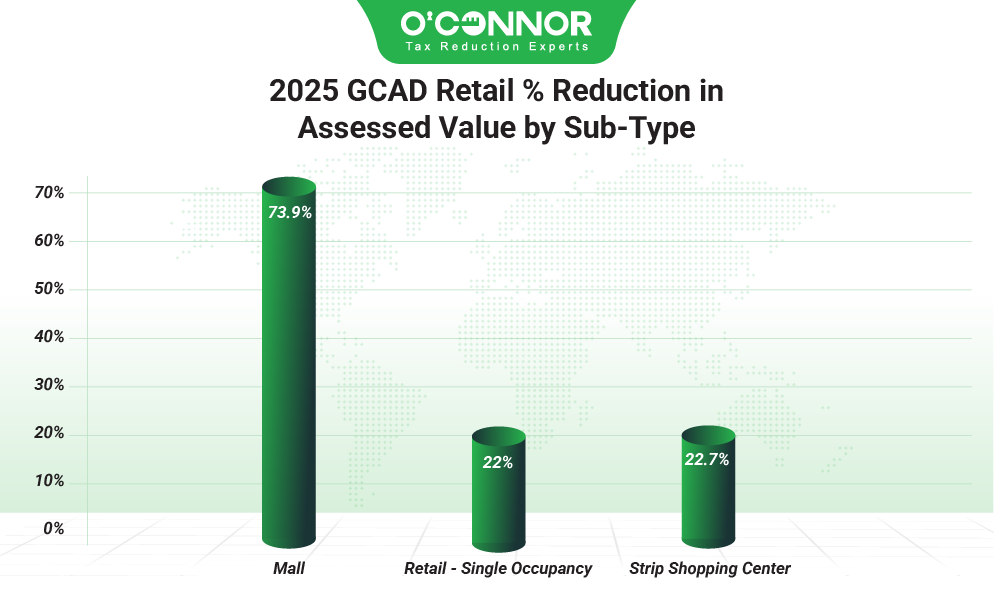
There were only three retail subtypes. The No. 1 in value was single-occupancy stores, which reached $642.82 million after being reduced by 22%. Strip centers were just behind with $623.35 million, following a cut of 22.7%. Malls got a whopping 73.9% reduction, dropping to $13.04 million.
Galveston County Property Tax Protest Save’s Warehouses 14.7%
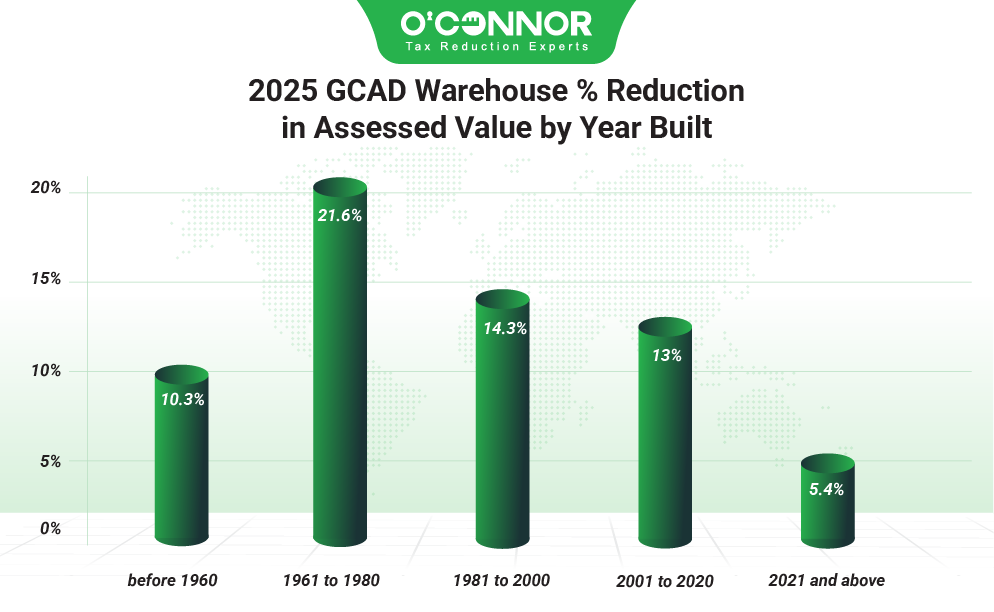
Warehouses were a relatively small factor in Galveston County, but this did not keep them from seeing a big increase of 19.2%, which translated into a new overall worth of $267.23 million. While initial appeals were mediocre, ARB hearings were able to push the overall reduction to 14.7%. This resulted in a sum of $227.88 million. Following a reduction of 13%, warehouses built from 2001 to 2020 saw a total of $104.72 million, 46% of all value. Those built from 1981 to 2000 contributed $66.35 million, while those from 1961 to 1980 were responsible for $40.66 million. New construction was a non-factor, only worth $6.29 million after a cut of 5.4%. When warehouse owners joined O’Connor, they saw even greater cuts to their taxable value, with a total reduction of 21.6%.
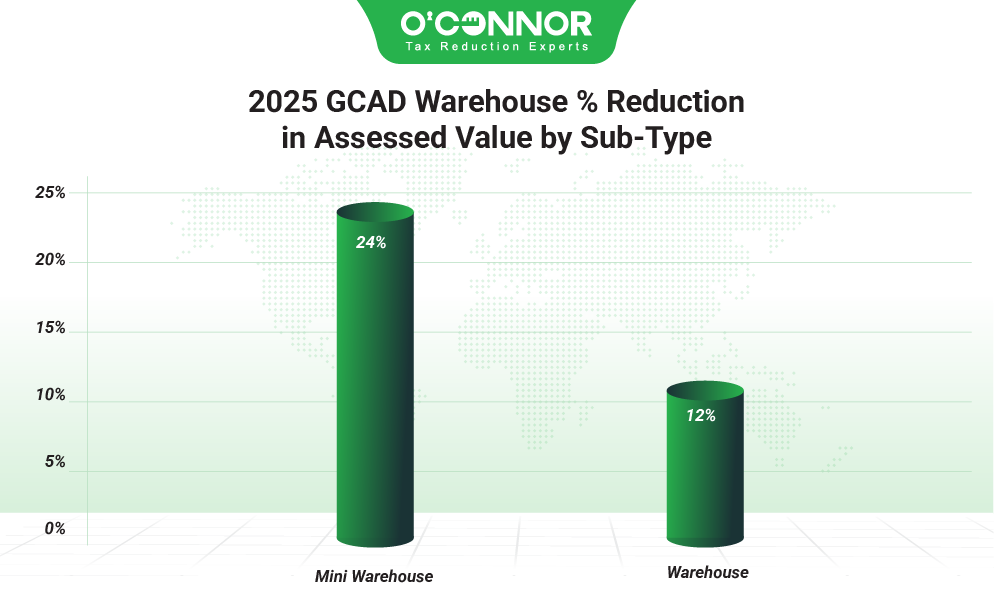
GCAD unhelpfully classified warehouses as either minis or generic. Generic warehouses were, oddly enough, the bigger of the two, and achieved a value of $181.30 million. Mini warehouses, meanwhile, were responsible for $46.59 million. These saw reductions of 12% and 24% respectively.
ARB Protests Showed Their Worth
A true disaster was avoided for those taxpayers that appealed. This meant the often record tax spikes were either mitigated or even reversed, giving business owners and homeowners major wins. However, not all appeals were created equal, and it was ARB hearings that truly dropped the values. Informal appeals managed to save taxpayers around $1.44 billion in taxable value. ARB hearings saved taxpayers $4.73 billion. In our previous blog, we expected ARB protests to come to the rescue, but not to this lopsided amount.
A taxpayer can only save if they appeal, and even though over 35% of all properties were protested, that still leaves two thirds of the county suffering from inflated taxes. Reaching the ARB part of the protest journey is not always easy, and many taxpayers give up. This is why it might be best for many residents if they use a tax firm to guide them. We at O’Connor are one of the biggest in America and helped over 185,000 clients in 2024. We managed to improve upon nearly every metric in Galveston County for our clients over the county numbers, including a reduction of 28.4% for commercial properties and 6.8% for homes. Compare this to 18.5% for businesses and 4.5% for homes that general reductions achieved. There is no cost to join us, and you will never see a hidden fee. You only pay from your winnings if we can lower your taxes. We will protest your properties every year and will take them to the highest appeal level required, even if that means the ARB.

